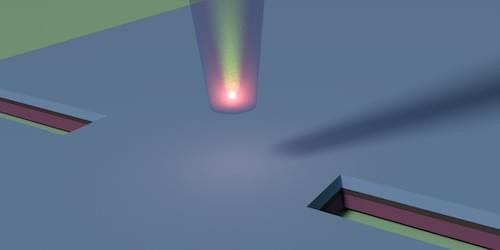A special microscope has visualized changes of electron current distribution that clearly indicate a transition from ohmic to viscous electron flow in graphene.
Imagine a breeze of moist air condensing into water drops and dripping down on a cold glass. Electrons can undergo a transition that resembles this gas-to-fluid condensation: the transition is controlled by temperature and produces a fluid-like state in which electrons display remarkably different dynamics than in the gas-like state. Unlike the condensation of water vapor, however, the electron transition cannot be directly imaged with a camera. One reason for this difficulty is that the pattern of this electron fluid varies at submicron scales that can’t be clearly resolved by visible light. Another reason is that electron collisions and the redistribution of electron currents do not yield a change of surface morphology that can be picked up by light reflection. This imaging challenge has so far limited our microscopic understanding of these types of electronic transitions and their use in practical devices.
